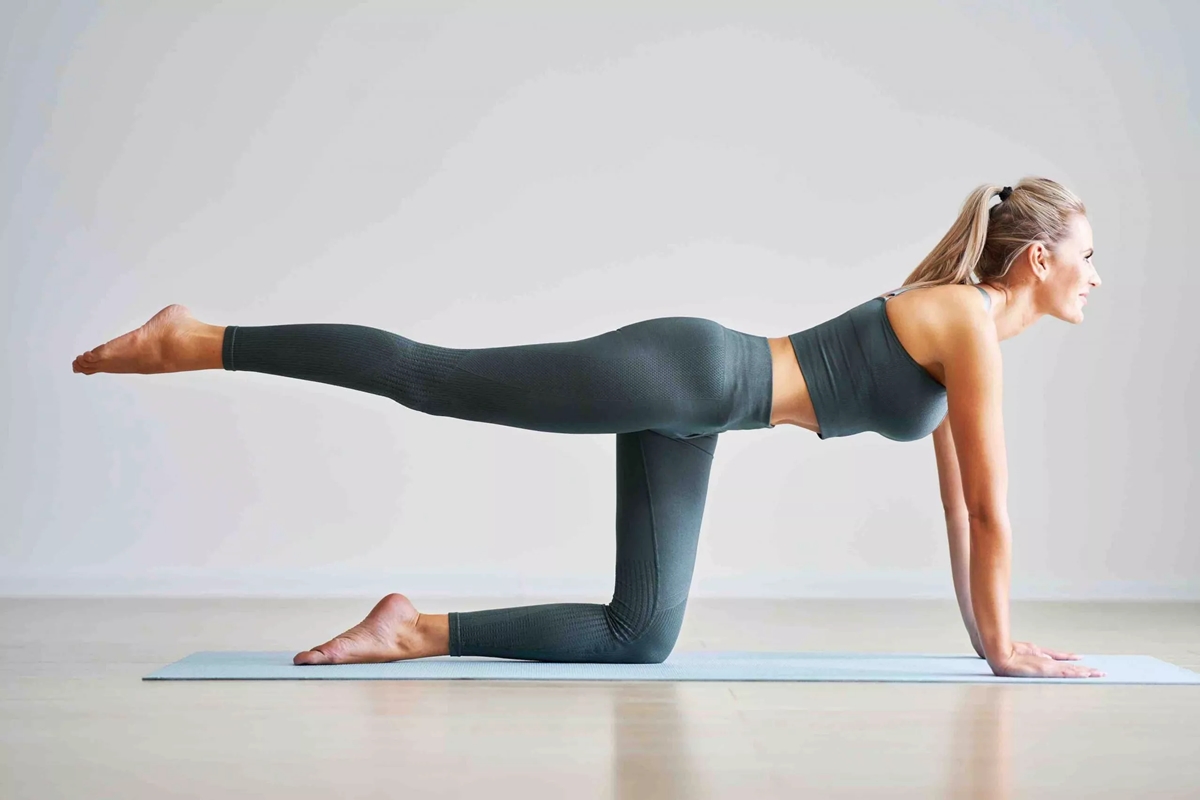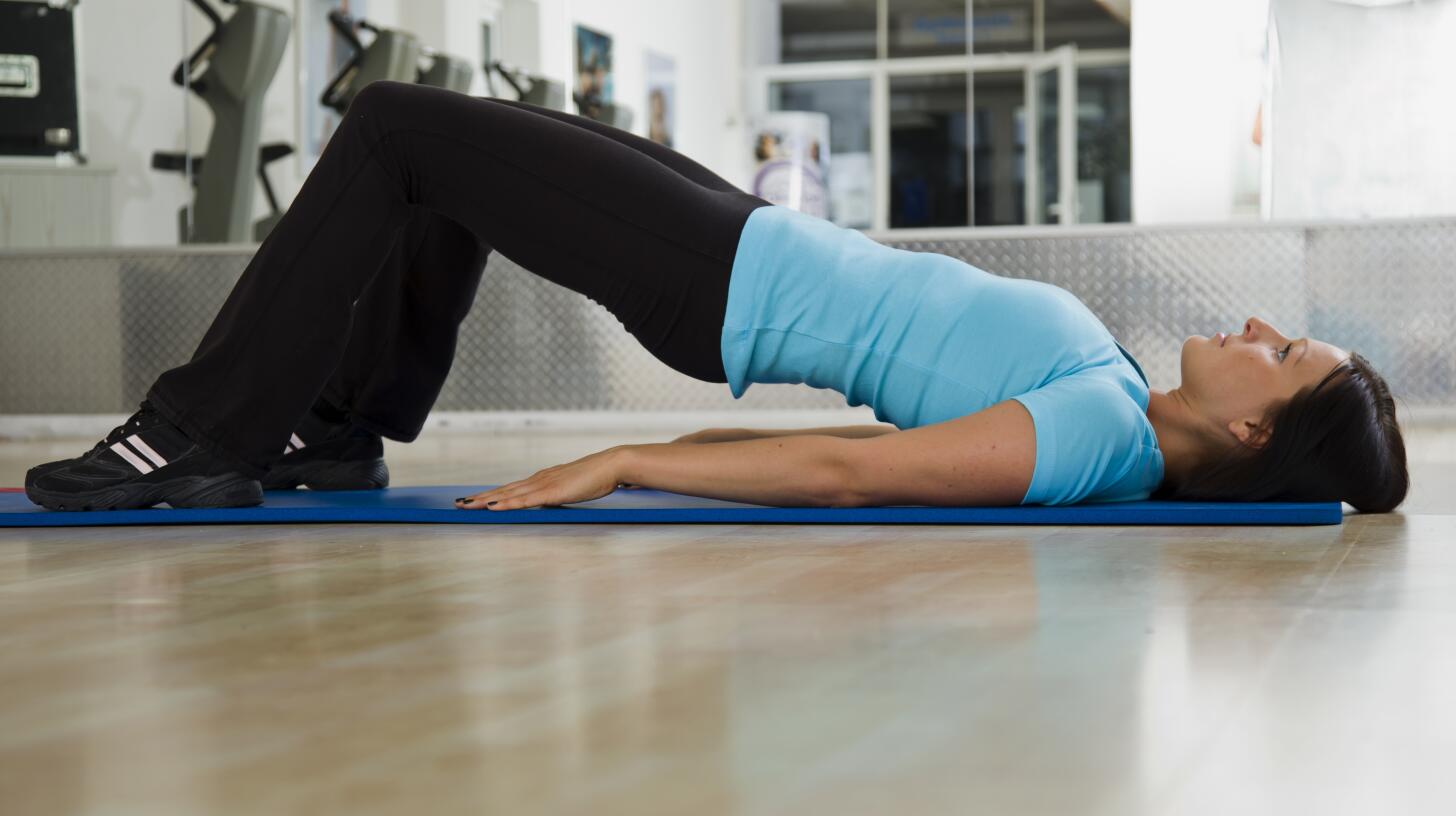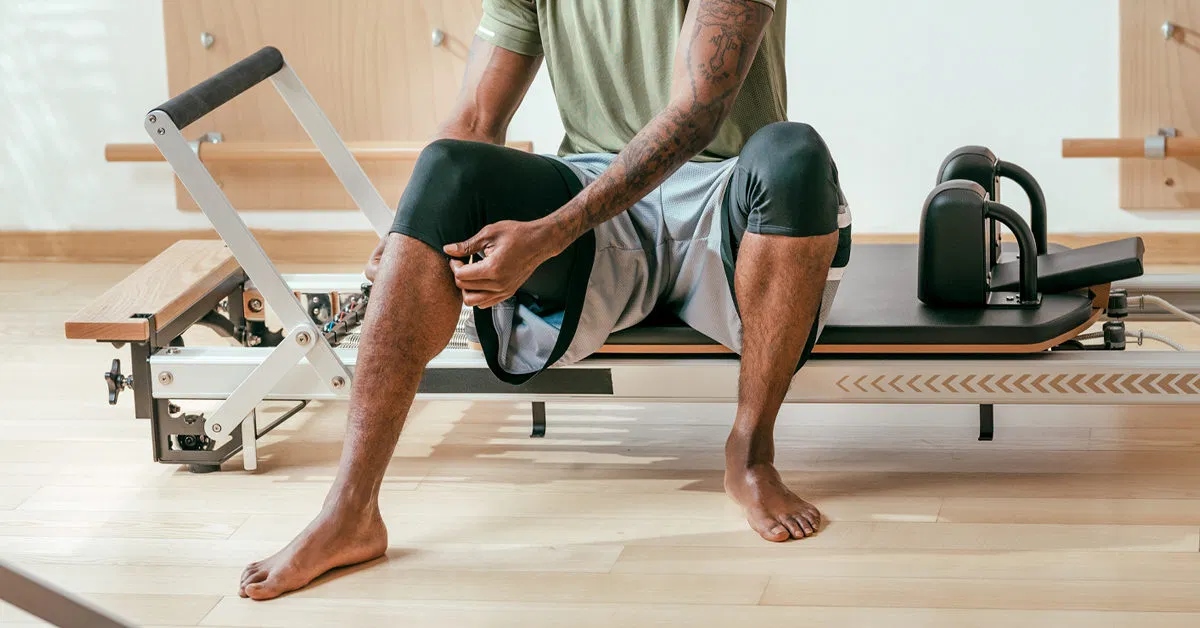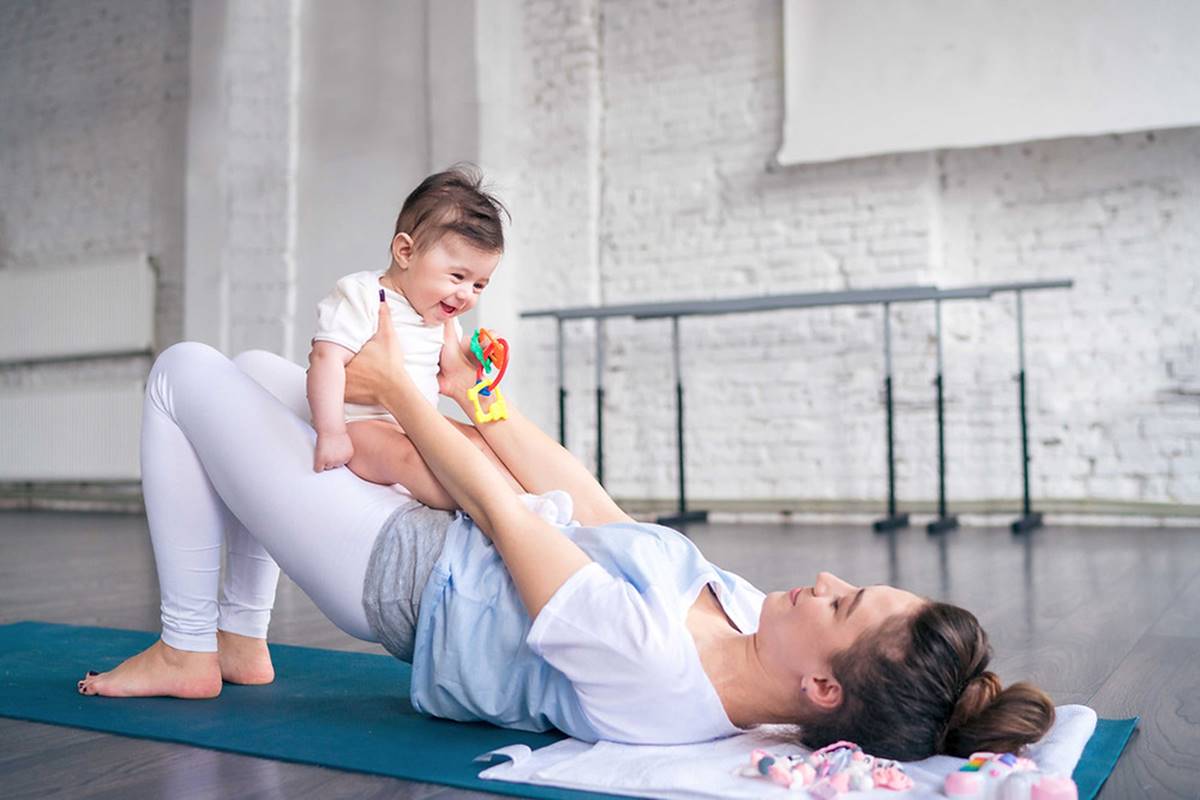Home>Misc>Featured>How Soon Can You Exercise After Breast Surgery


Featured
How Soon Can You Exercise After Breast Surgery
Modified: January 2, 2024
Discover when it's safe to resume exercise after breast surgery, including featured tips for a speedy recovery.
Introduction
Undergoing breast surgery is a significant decision that can have a transformative effect on a person’s life. Whether it’s breast augmentation, reduction, or reconstruction, these surgeries require careful consideration and post-operative care. One important aspect of the recovery process is knowing when it’s safe to resume exercise and physical activities.
Breast surgery is a specialized procedure that involves reshaping and enhancing the breasts. It can be performed for various reasons, including cosmetic enhancements, correcting asymmetry, or restoring the breasts after mastectomy.
Post-surgery, it’s crucial to allow the body sufficient time to heal and regain strength before engaging in physical activities. Exercise plays a vital role in overall well-being, but it’s essential to approach it with caution and follow the guidance of your surgeon or healthcare professional. Knowing when and how to ease back into exercise after breast surgery is key to ensuring a safe and successful recovery.
In this article, we will explore the types of breast surgeries, the healing process after surgery, factors to consider before exercising, the timeline for exercise after breast surgery, recommended exercises, and precautions to keep in mind. By understanding the importance of post-surgical recovery and incorporating exercise appropriately, you can optimize the healing process and achieve long-term success.
Types of Breast Surgeries
There are several types of breast surgeries that individuals may undergo, depending on their specific needs and goals. Each procedure serves a unique purpose and requires different approaches to post-operative care.
1. Breast Augmentation: This surgery involves placing implants to increase the size and enhance the shape of the breasts. It can be done using saline or silicone implants and is a popular choice for individuals who desire fuller breasts.
2. Breast Reduction: Breast reduction surgery aims to remove excess breast tissue and skin to reduce the size and alleviate discomfort caused by overly large breasts. It offers both aesthetic and functional benefits, improving posture and reducing back, neck, and shoulder pain.
3. Breast Lift: Also known as mastopexy, this procedure is performed to raise and reshape sagging breasts. It involves removing excess skin and tightening the surrounding tissue to achieve a firmer, more youthful appearance.
4. Breast Reconstruction: This surgery is typically performed after mastectomy, which is the removal of one or both breasts due to cancer or other medical conditions. Breast reconstruction aims to restore the breasts’ appearance by using implants or the patient’s own tissue.
5. Breast Implant Removal: Some individuals may decide to have their breast implants removed for various reasons, such as discomfort or a change in personal preferences. This procedure involves removing the implants and potentially addressing any changes in breast shape or volume.
It’s important to consult with a qualified plastic surgeon who specializes in breast surgery to determine the most suitable procedure for your specific needs. Each surgery has its own set of considerations in terms of recovery time, limitations, and recommended post-operative care.
Healing Process After Breast Surgery
The healing process after breast surgery is a crucial phase that requires patience and attentive care. Understanding what to expect during this period can help you navigate the recovery journey more effectively.
Immediately after surgery, you can expect to experience some discomfort, swelling, and bruising. Your surgeon will provide you with specific instructions on wound care and pain management. It’s important to follow these instructions closely to promote proper healing and minimize complications.
During the first few days after surgery, it is common to feel fatigued and have limited mobility. It is recommended to get plenty of rest and avoid any strenuous activities. It’s crucial to restrict arm movements and refrain from lifting heavy objects to allow the healing process to progress smoothly.
The initial swelling will gradually subside over the first few weeks, and you may be advised to wear a supportive bra or compression garment to aid in the healing process and reduce swelling. It’s essential to attend all follow-up appointments with your surgeon to monitor your progress and address any concerns.
As the healing progresses, you will notice improvements in the appearance and feel of your breasts. However, it’s important to keep in mind that the full healing process can take several months. It’s crucial to be patient and give your body the time it needs to fully recover.
Your surgeon will provide guidance on when it’s safe to resume normal activities, including exercise. It’s essential to adhere to these guidelines to avoid complications and ensure a successful outcome.
It’s important to note that the healing process can vary from person to person, and individual circumstances can also impact the timeline. Make sure to communicate openly with your surgeon throughout the recovery period and seek their guidance if you have any concerns or questions.
Factors to Consider Before Exercising
Before resuming any form of exercise after breast surgery, it’s essential to consider several factors to ensure your safety and prevent any potential complications. Here are the key factors to keep in mind:
- Surgeon’s Approval: Always consult with your surgeon or healthcare professional before starting any exercise regimen. They know the specifics of your surgery and can provide personalized guidance based on your progress and overall health.
- Healing Progress: It’s crucial to give your body enough time to heal before engaging in physical activities. Rushing into exercise too soon can increase the risk of complications or delay the healing process.
- Post-operative Instructions: Follow the post-operative instructions provided by your surgeon. These instructions may include limitations on arm movements, avoidance of heavy lifting, and specific guidelines on when and how to start exercising.
- Pain and Discomfort: Pay attention to your body and listen to any pain or discomfort signals. If you experience any unusual or severe pain during exercise, stop immediately and consult your surgeon. It’s important not to push through pain as it may indicate a problem or injury.
- Implant Positioning: If you underwent breast augmentation or reconstruction with implants, the positioning of the implants needs to be considered. Vigorous exercise or activities that put pressure on the chest may cause the implants to shift or become displaced.
- Overall Fitness Level: Assess your overall fitness level before starting exercise. If you were not physically active before surgery, it’s essential to start slowly and gradually increase intensity and duration.
- Supportive Sports Bra: Invest in a high-quality, supportive sports bra that provides adequate support to your breasts. This will minimize discomfort and reduce the risk of excessive breast movement during exercise.
- Potential Impact on Incisions: Consider the type and location of incisions made during your surgery. Avoid exercises that put direct pressure or strain on the incision areas to prevent complications or delayed healing.
By considering these factors and seeking professional guidance, you can make informed decisions about when and how to incorporate exercise into your post-surgical routine. Remember, prioritize your health and well-being throughout the recovery process.
Timeline for Exercise after Breast Surgery
The timeline for resuming exercise after breast surgery varies depending on the type of surgery, individual healing progress, and the guidance of your surgeon. It’s crucial to follow the recommended timeline to ensure a safe and successful recovery. Here is a general guideline for when you can start exercising after breast surgery:
- Week 1: During the first week after surgery, it’s important to focus on rest and recovery. Avoid any strenuous physical activities, including exercise. Instead, prioritize gentle movements and light stretching as recommended by your surgeon.
- Weeks 2-4: In this phase, you can gradually introduce light activities, such as short walks. However, it’s crucial to avoid any activities that involve significant chest or arm movements, heavy lifting, or intense cardio workouts.
- Weeks 4-6: At this stage, you may be able to begin more moderate exercise, such as low-impact cardio exercises like stationary biking or using an elliptical machine. Focus on gradually increasing duration and intensity while still avoiding high-impact exercises or activities that strain the chest muscles.
- Weeks 6-8: Most individuals can resume more vigorous exercise at this point, including strength training with lower weights and higher repetitions. However, it’s crucial to listen to your body and avoid overexertion. If you experience any discomfort or pain, scale back your activities and consult your surgeon.
- 8+ Weeks: By this time, most individuals can return to their regular exercise routine. However, it’s important to continue monitoring your body’s response and gradually increase intensity and weights to prevent injury or strain.
Keep in mind that this timeline is a general guideline, and each person’s recovery may vary. Always consult with your surgeon before starting or modifying any exercise routine. They will assess your healing progress and provide you with personalized recommendations to ensure a safe and effective return to exercise.
Remember, patience is key during the recovery process. It’s crucial to give your body ample time to heal properly and gradually increase your exercise routine to minimize the risk of complications or setbacks.
Recommended Exercises after Breast Surgery
After breast surgery, it’s important to gradually reintroduce exercise into your routine to promote healing, improve flexibility, and regain strength. However, it’s crucial to choose exercises that are gentle and minimize strain on the chest and breast area. Here are some recommended exercises to consider:
- Gentle Walking: Walking is a low-impact exercise that promotes blood circulation and helps prevent blood clots. Start with short, leisurely walks and gradually increase the duration as you feel comfortable.
- Range of Motion Exercises: Your surgeon may recommend specific range of motion exercises to maintain flexibility in your upper body. These exercises may involve gentle arm raises, arm circles, and shoulder rolls. Follow the instructions provided by your surgeon or a physical therapist.
- Yoga: Gentle yoga poses can help improve flexibility, strength, and promote relaxation. Focus on poses that don’t put pressure on the chest area, such as gentle stretches, breathing exercises, and restorative poses.
- Pilates: Pilates is a low-impact exercise that focuses on core strength, flexibility, and posture. Choose modified exercises that avoid straining the chest and focus on engaging the abdominal muscles and lower body.
- Low-impact Cardio: If approved by your surgeon, engage in low-impact cardio exercises like stationary biking or using an elliptical machine. Ensure proper form and avoid excessive bouncing or movements that strain the chest.
- Strength Training: Gradually incorporate strength training exercises into your routine, focusing on the lower body and core. Use lighter weights and higher repetitions to build endurance and avoid strain on the upper body.
Remember, it’s essential to listen to your body and avoid any exercises that cause pain or discomfort. If you experience any unusual symptoms or concerns, consult your surgeon or healthcare professional.
Additionally, wearing a supportive sports bra during exercise is vital to minimize discomfort and reduce breast movement. Make sure to invest in a high-quality sports bra that provides adequate support and compression for your specific needs.
Always follow the guidance of your surgeon or healthcare professional when it comes to exercise recommendations and modifications. They will consider your specific surgery, healing progress, and individual circumstances to provide personalized advice for a safe and effective recovery.
Precautions and Guidelines for Exercising
While exercise is important for the recovery process after breast surgery, it’s essential to approach it with caution and follow certain precautions to ensure your safety and well-being. Here are some important precautions and guidelines to keep in mind:
- Consult with your surgeon: Always consult with your surgeon or healthcare professional before starting any exercise program. They can provide personalized advice based on your specific surgery and recovery progress.
- Start slow and gradually increase intensity: Begin with gentle exercises and gradually increase the intensity and duration over time. This allows your body to adapt and minimize the risk of strain or injury.
- Avoid high-impact exercises: Steer clear of high-impact activities that may strain the chest muscles or breasts, such as jumping, running, or activities with a lot of bouncing. Focus on low-impact alternatives like walking, swimming, or cycling.
- Listen to your body: Pay attention to any pain or discomfort during exercise. If you experience any unusual symptoms, such as swelling, bleeding, or persistent pain, stop exercising immediately and consult your surgeon.
- Avoid heavy lifting: Refrain from lifting heavy weights or engaging in activities that put excessive strain on the chest or arms. This can help prevent complications or disruptions in the healing process.
- Maintain good posture: Practice proper posture during exercise to avoid unnecessary strain on the back and shoulders. Engaging the core muscles can also provide added support and stability during exercise.
- Support your breasts: Wear a supportive sports bra that fits well and provides adequate support for your breasts. This helps minimize discomfort and reduces excessive breast movement during exercise.
- Stay hydrated: Drink plenty of water before, during, and after exercise to stay hydrated. This is important for overall health and can help prevent muscle cramps and fatigue.
- Follow post-operative instructions: Adhere to the post-operative instructions provided by your surgeon, including wound care, medication guidelines, and follow-up appointments. This will ensure a smooth recovery and minimize the risk of complications.
Remember, everyone’s recovery process is unique, and it’s important to follow the specific guidelines provided by your surgeon. If you have any concerns or questions, don’t hesitate to reach out to your healthcare team for guidance and support.
By taking the necessary precautions and following these guidelines, you can safely incorporate exercise into your post-surgical routine, promote healing, and optimize your overall recovery.
Conclusion
Engaging in exercise after breast surgery requires careful consideration and adherence to specific guidelines to ensure a safe and successful recovery. By understanding the types of breast surgeries, the healing process, and the timeline for resuming exercise, you can make informed decisions about when and how to incorporate physical activities back into your routine.
Factors such as surgeon’s approval, healing progress, post-operative instructions, and overall fitness level play a crucial role in determining when it’s safe to start exercising. It’s important to listen to your body, avoid straining the chest or breast area, and gradually increase the intensity and duration of your workouts.
Recommended exercises after breast surgery include gentle walking, range of motion exercises, yoga, Pilates, low-impact cardio, and strength training. It’s crucial to choose exercises that minimize strain on the chest and breasts, while also considering the positioning of implants if applicable.
Precautions and guidelines for exercising after breast surgery include consulting with your surgeon, starting slow, avoiding high-impact activities, listening to your body, avoiding heavy lifting, maintaining good posture, wearing a supportive sports bra, staying hydrated, and following post-operative instructions carefully.
Remember that every individual’s recovery process is unique, so it’s important to consult with your surgeon or healthcare professional for personalized advice. They will provide specific recommendations based on your surgery, healing progress, and overall health.
By following these guidelines and prioritizing your healing process, you can safely incorporate exercise into your post-surgical routine, promote physical well-being, and enhance the overall success of your breast surgery journey.









